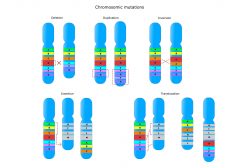Definition
noun
A disease-causing anaerobic protozoan species capable of causing entamoebiasis and amebic dysentery to its host
Supplement
Entamoeba histolytica is a protozoan that belongs to the Archamoebae. Archamoebae are distinguished from the other Amoebozoa species by their lack of mitochondria. Thus, species belonging to Archamoebae are species that carry out anaerobic respiration.
The distinctive features of Entamoeba histolytica are the single nucleus with a small central karyosome, and the peripheral chromatin that is finely and regularly beaded. Sometimes it is confused with Entamoeba coli, which does not cause disease and remain commensal within its host.
Entamoeba histolytica is capable of causing entamoebiasis and amebic dysentery to its human and other primate hosts. The infective stage of this species is the cyst, which can be transmitted through ingestion. When swallowed, the cyst will release the trophozoite in the digestive tract. The parasite does not produce symptoms in most cases. However, when the trophozoites move from the mucus layer of the large intestine and reach the epithelial cell layer, they become pathogenic, causing tissue destruction, which leads to flask-shape ulcers, and eventually to bloody diarrhea. In certain instances, the trophozoites gain entry into the bloodstream and subsequently reach other organs (e.g. liver) where they cause damage as well.
Scientific classification:
- Domain: Eukaryota
- Phylum: Amoebozoa
- Class: Archamoebae
- Genus: Entamoeba
- Species: E. histolytica
Compare:
See also:
- Entamoeba
Mentioned in:







